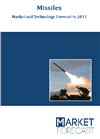Northrop Grumman Corporation (NYSE: NOC) recently completed its Critical Design Review (CDR) on a proliferated low-Earth orbit constellation of 16 missile tracking satellites for the Space Development Agency, clearing the way to begin production work on the space vehicles.
Expert:
Candace Givens, vice president, overhead persistent infrared and geospatial systems, Northrop Grumman: “We are developing a more responsive, flexible and resilient space architecture to counter sophisticated threats. By passing this critical milestone on an accelerated timeline, we are closer to delivering critical missile defense and tracking technologies.”
Details on the PWSA:
Fourteen of the satellites for T1TRK will feature a wide field-of-view sensor, three optical communications terminals and a Ka-band payload for communications. Two satellites will feature a medium field-of-view infrared sensor to demonstrate a fire-control solution.

Market forecast by Regions, Types, Guidance systems, and Launch Platforms. Country Analysis, Market and Technology Overview, Critical Raw Materials, Opportunity Analysis, and Leading Company Profiles
Download free sample pages More informationNorthrop Grumman is a leading contractor providing both space vehicles and ground systems for SDA’s PWSA, a next-generation constellation in low-Earth orbit. The company continues to leverage this growing industry base of capable suppliers to support this critical mission. PWSA has two major lines of effort:
To date, SDA has awarded Northrop Grumman 132 satellites. In March, Northrop Grumman successfully completed a Critical Design Review for T1TL. In October, SDA awarded Northrop Grumman a contract to design and build 38 satellites as part of Tranche 2 Transport Layer – Alpha (T2TL-Alpha).
Northrop Grumman is a leading global aerospace and defense technology company. Our pioneering solutions equip our customers with the capabilities they need to connect and protect the world, and push the boundaries of human exploration across the universe. Driven by a shared purpose to solve our customers’ toughest problems, our employees define possible every day.
This research was, in part, funded by the U.S. Government. The views and conclusions contained in this document are those of the authors and should not be interpreted as representing the official policies, either expressed or implied, of the U.S. Government.